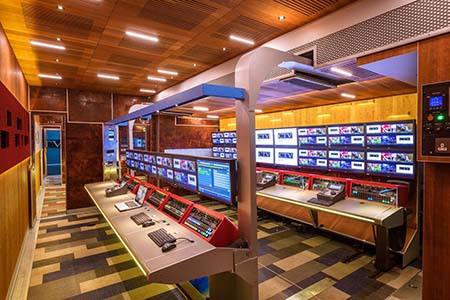According to Jan Eveleens, CEO, Axon, AVB has the capability to transform the way broadcasters manage and deliver live production video content Audio and video equipment connections have historically been one-way; single-purpose and point-to-point. Until recently, even digital video standards including the ubiquitous SDI were often one-way. While SDI isnt going away just […]

According to Jan Eveleens, CEO, Axon, AVB has the capability to transform the way broadcasters manage and deliver live production video content
Audio and video equipment connections have historically been one-way; single-purpose and point-to-point. Until recently, even digital video standards including the ubiquitous SDI were often one-way.
While SDI isnt going away just yet, AVB (audio video bridging) will transform the way broadcasters manage and deliver live production video content. Its ease, interoperability and ability to increase bandwidth are just too compelling not to make the move. Longer-term cost efficiencies in the face of a future that will continue to strain budgets and resources will only make it even more attractive.
AVB defined
An open standard established by the IEEE, AVB is a group of network protocols for the distribution of time synchronised and low latency audio and video streams over Ethernet. In short, all audio and video streams, as well as associated control, metadata and synchronisation needed for a live production, are on a single cable/layer/infrastructure. The design and build of a studio or broadcast facility suddenly becomes a whole lot easier, more flexible and less costly. Removing the inherent bandwidth, speed and set-up problems of single-wire SDI infrastructure, AVB provides agile, easy and instantly connected network access.
The ability to have one connection that can carry multiple streams and work as both an input and output is game changing, particularly when combined with AVBs support of all existing video formats, but also new emerging UHD formats (4K for example), high quality audio and monitoring/control/metadata with equal ease. AVB utilises standard, off-the-shelf Ethernet switches with AVB software extensions on top, providing broadcasters with a predictable, reliable, consistent and uncompressed video and audio delivery experience. The AVB network is completely synchronous. What you put in is what you get out for very stable, fast and low latency 2ms delay transport.
Engineered from the ground up for media streaming applications, AVB allows bandwidth allocation and priority rules based on timing. AVB dynamically assigns and defends bandwidth allocation for AVB streaming by a concept of stream reservation protocol (SRP). AVB devices also periodically exchange timing information so all nodes on the network synchronise their time base reference clocks very precisely for the synchronisation of multiple streams.
Time for a new standard?
SDI has been a working standard for the past 25 years, and it has delivered, but perhaps weve pushed beyond SDIs optimal capacity.
There are three primary aspects of AVB that set it apart from standard Ethernet-based technology. Advanced timing and synchronisation, bandwidth allocation, and traffic shaping to ensure that lower priority legacy Ethernet traffic does not interfere with critical AVB traffic are all key to the technologys advantages in todays content-driven broadcast environment. Media data is protected by the Ethernet switches in the network, with all non-critical data, such as email, prioritised behind. Non-critical data will still get there quick enough, but not at the same guaranteed rates as video and other critical data.
Furthermore, standard Ethernet infrastructure is based on a best effort delivery offering little control of speed and delivery time. AVB provides critical control of bandwidth usage and prioritisation of the network. Congestion will not cause dropping of stream data packets, as the network can never be overloaded. AVB can also easily bridge technologies, enabling composite video, advantageous both now and as content providers transition to AVB.
Helping to set this: AVnu Alliance
Theres an industry alliance working to advance AVB and interoperability between AVB devices. The AVnu Alliance (www.avnu.org) is currently creating compliance test procedures and certification processes that ensure interoperability of networked AVB A/V devices and the highest quality streaming A/V experience.
AVB for A/V is being explored and implemented by the automotive industry. In Broadcast, AVB audio is already qembraced for audio processing consoles and intercom. Early adopters will carve a path for widespread adoption over time, perhaps a decade or more. Since there are multiple suppliers for AVB technologies, the costs will stay low and the competition between manufacturers high. This will allow these networks to keep pace with improvements in bandwidth and Ethernet technologies by being highly adaptable and relatively inexpensive.
















































































